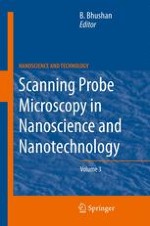
2013 | OriginalPaper | Chapter
1. Laser-Assisted Scanning Probe Alloying Nanolithography (LASPAN)
Authors : Luohan Peng, Huiliang Zhang, Philip Hemmer, Hong Liang
Published in: Scanning Probe Microscopy in Nanoscience and Nanotechnology 3
Publisher: Springer Berlin Heidelberg
Activate our intelligent search to find suitable subject content or patents.
Select sections of text to find matching patents with Artificial Intelligence. powered by
Select sections of text to find additional relevant content using AI-assisted search. powered by